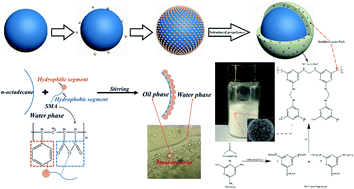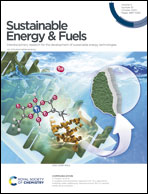A novel bifunctional microencapsulated phase change material loaded with ZnO for thermal energy storage and light–thermal energy conversion
Abstract
A novel bifunctional microencapsulated phase change material (PCM) was synthesized via in situ polymerization by creatively introducing zinc oxide nanoparticles (nano-ZnO) into the polymer shell, which provided the microencapsulated PCMs with good light–thermal conversion properties and thermal stability. Nano-ZnO, which possesses solar absorption properties and good mechanical and chemical stability, can also endow the MPCMs with good comprehensive properties. Differential scanning calorimetry results confirmed that the microencapsulated PCMs possess outstanding latent heat storage capacity with an encapsulation efficiency of 51.40%. And the melting enthalpy reached 123.90 J g−1, exhibiting an excellent thermal reliability for 100 thermal cycles. Moreover, the microencapsulated PCMs showed a high photothermal storage efficiency of about 75.2%. These results demonstrated that the obtained microencapsulated PCMs not only possess excellent thermal energy storage capacity but also have high light–thermal storage efficiency, which may expand the potential applications of thermal energy storage.



 Please wait while we load your content...
Please wait while we load your content...